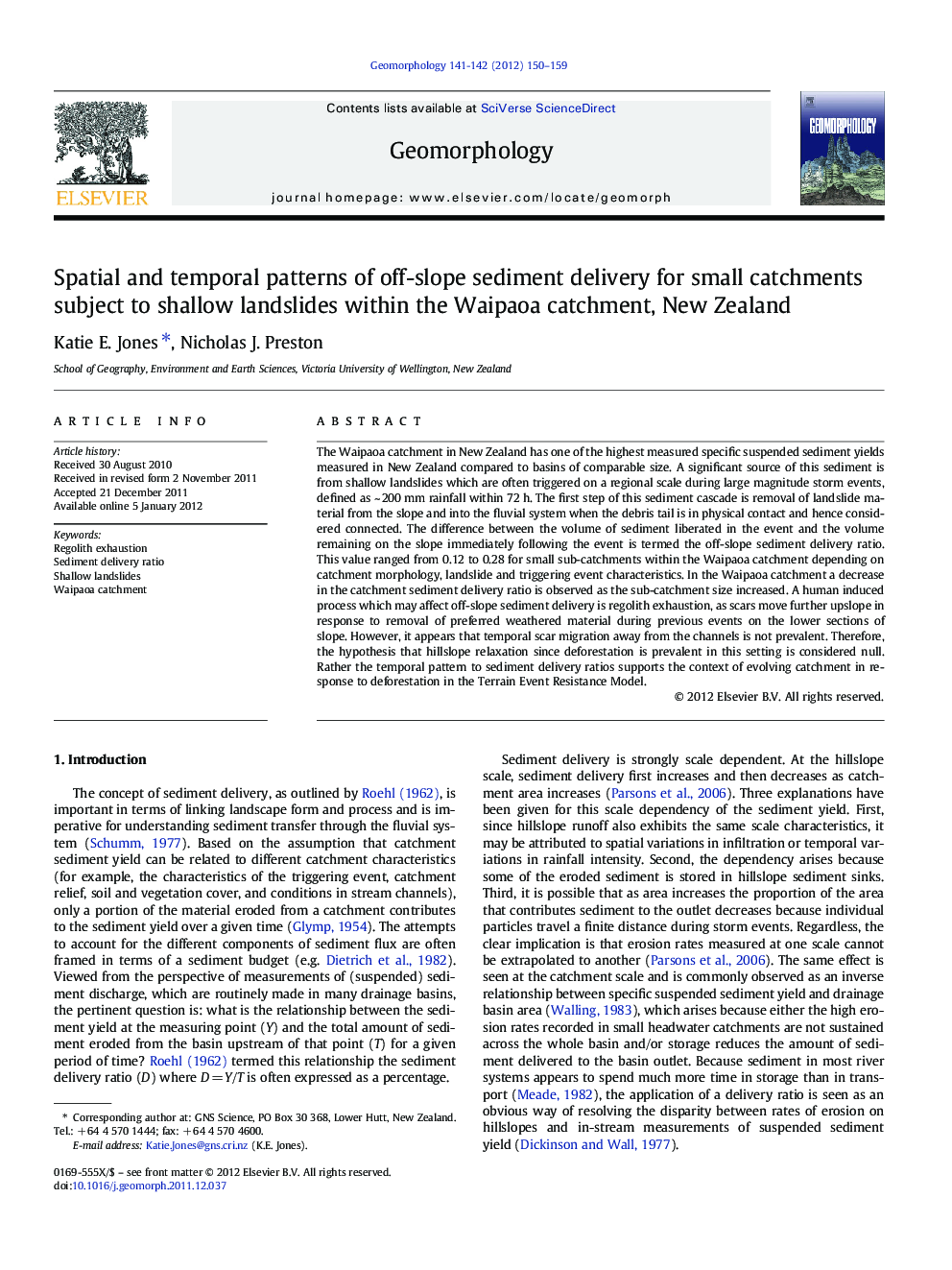| Article ID | Journal | Published Year | Pages | File Type |
|---|---|---|---|---|
| 6432965 | Geomorphology | 2012 | 10 Pages |
The Waipaoa catchment in New Zealand has one of the highest measured specific suspended sediment yields measured in New Zealand compared to basins of comparable size. A significant source of this sediment is from shallow landslides which are often triggered on a regional scale during large magnitude storm events, defined as ~Â 200Â mm rainfall within 72Â h. The first step of this sediment cascade is removal of landslide material from the slope and into the fluvial system when the debris tail is in physical contact and hence considered connected. The difference between the volume of sediment liberated in the event and the volume remaining on the slope immediately following the event is termed the off-slope sediment delivery ratio. This value ranged from 0.12 to 0.28 for small sub-catchments within the Waipaoa catchment depending on catchment morphology, landslide and triggering event characteristics. In the Waipaoa catchment a decrease in the catchment sediment delivery ratio is observed as the sub-catchment size increased. A human induced process which may affect off-slope sediment delivery is regolith exhaustion, as scars move further upslope in response to removal of preferred weathered material during previous events on the lower sections of slope. However, it appears that temporal scar migration away from the channels is not prevalent. Therefore, the hypothesis that hillslope relaxation since deforestation is prevalent in this setting is considered null. Rather the temporal pattern to sediment delivery ratios supports the context of evolving catchment in response to deforestation in the Terrain Event Resistance Model.
⺠We determined off-slope catchment sediment delivery ratios from shallow landslides. ⺠We determined the catchments sediment delivery ratio is linked to catchment area. ⺠We observed no temporal pattern to off-slope sediment delivery. ⺠We observed no evidence of regolith exhaustion or upslope retreat of scars.
